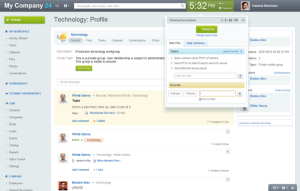
Testers rely on multiple sources for required information in their daily lives. The more sources there are, the higher are the chances of misinterpretation. Generally, in every release, a tester relies on four major sources for information:
- People
- Documentation
- Infrastructure
- Software
People
A release involves stakeholders, project managers, end-users, developers, and testers. With the variety of people on-board, you get different opinions about the feature under test. With so many opinions, there is a greater chance of misunderstandings because many of them may simply be based on prejudices or may fail to relate facts. Don’t get distracted by such opinions. Follow the ones that are aligned with your company’s interests.
Documentation
Testers have to go through a lot of documentation to fully understand the feature under test. These documentations include design documents to understand designers’ plans for a user story, requirement gathering documents to understand client expectations, and project plans set by the project manager. Testers need to stay sharp while reading these documentations to avoid any kind of misinterpretation.
Infrastructure
Ideally, companies would have multiple staging environments to validate code changes being pushed to the production environment beforehand. Your staging environment should be as closely replicated to the production environment as possible. Before giving the go-ahead signal to a feature, you must test it extensively in these prepared staging environments. However, there are times when you encounter a scenario where the staging environment isn’t as identical as the tester and the management expected. In such cases, highlight the discrepancies in the staging environment and their consequences.
Test data can also lead to misunderstandings. Staging environments are often not challenged as heavily as production environments because they usually don’t have real-time traffic over them. You should also be very particular about test management tools that are being used; they must allow you to monitor test reports daily and note down instances of false positives and negatives.
Software
Believe it or not – third-party integrations between your test management tools and others can also lead to ambiguity. An integration may fail if a change over the third-party software is made. Also, it must be ensured that the information exchange between the two software is secure.
Now that we know the reasons for misunderstandings, let’s look at how critical thinking can help testers avoid these problems.
Why do Testers need to be Critical Thinkers?
Sometimes, testers provide a sign-off simple because their test case passed. The job of a tester is to be a bridge between customers and developers. A sign-off should only be given if the provided solution from your developer makes sense for your customer and not your developer alone.
You need to take the possibility of user experience hindrance into account, even if you have the right solution. Being critical thinkers helps you to:
- Write better test cases and find bugs
- Avoid ambiguities and misunderstandings
- Ask the right questions in a meeting
- Communicate better with project managers and DevOps team
- Understand stakeholders’ opinions
- Collect requirements clearly
It’s always the tester who is blamed for passing a buggy feature and rightly so. Testers then come up with great excuses to cover up but instead of going through this trouble, why not pass a feature with caution in the first place?
Every release cycle enhances the product and increases test requirements. With more release cycles passed, the testers will have to note more in the QA checklist. With so many different opinions about enhancements over team-meetings and regression defects of a hotfix, it could be chaotic unless testers think critically over what makes sense. Doing so is a big challenge.
Critical thinking can help you evaluate the results of your development. Testers need to be proactive while they are in meetings involving enhancement discussions or even code review sessions. Testers need to have an eye of a detective, which means they always need to be suspicious and look for clues and get to the root cause of the problem. They need to be curious about what is being missed out. This requires them to be on top of their game, motivated, and keep an open mind and realize the difference between facts and false logic. They need to be comprehensive in their testing approach. It is also very important to keep the diversity of cultural values and experiences of different colleagues in your mind. This helps you to think critically before presenting your opinion to them.
Business & Finance Articles on Business 2 Community
(32)







